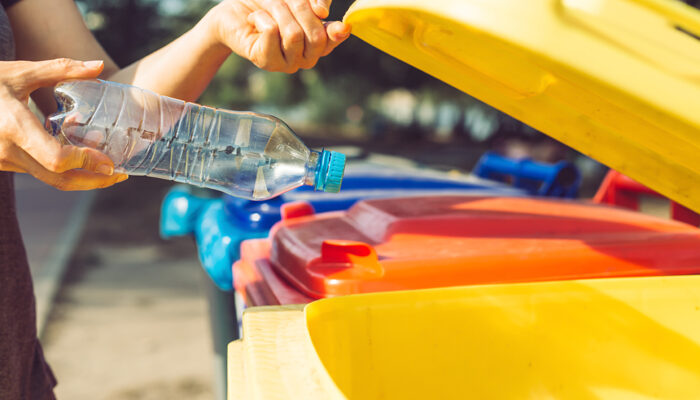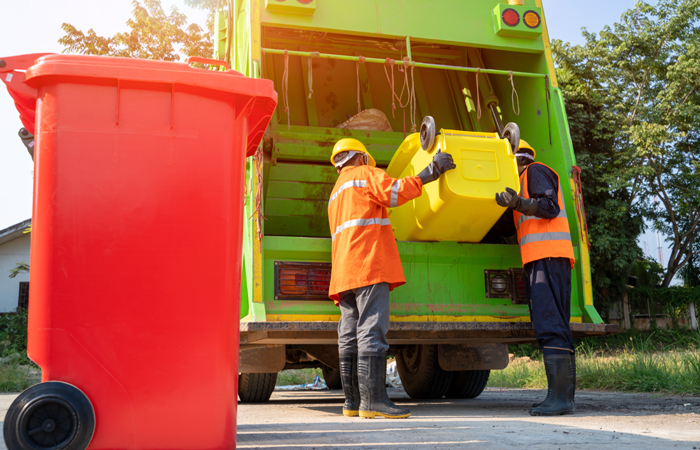
On average, families are responsible for producing 756 kilograms. That’s only a fraction of the 43 tonnes of solid waste that Australian remove annually. Still, many choose to ignore the impact of the amount of garbage they produce.
Rubbish often ends up in landfills that are seriously damaging the environment, especially if the proper ways of disposing of trash aren’t implemented. Furthermore, if the garbage you put out of the house isn’t segregated, it’s wasting the time and resources of those responsible for waste management.
Different Ways Of Waste Disposal
An infographic may further help you realize the serious impact of improper garbage disposal on the environment. Seeing the statistics will help you realize that you may be a part of the problem as well.
If you want to help ease mother nature’s afflictions, you can start by adopting practical ways to manage the amount of rubbish you’re putting out today.
- Waste Segregation
Sort out the type of garbage your household tends to accumulate and separate them according to the type of material. Thus, set different bins for recyclables, such as waste paper, old newspapers, glass bottles, tin, aluminum cans, and plastic bags among others. These types of rubbish are also called non-hazardous waste. Moreover, unused cleaners and batteries are hazardous materials that must also have their own disposal bins.
If you’d like to adopt a meticulous way of segregating and packing your trash, you can take ideas from the Japanese’s systematic methods. Their methods include segregating combustibles, incombustible, oversized garbage, and bottles and cans. They also make use of colored bags to sort different types of trash.
Here are some ideas on how to pack your garbage:
- To seal your garbage and to prevent small animals from getting into them, use heavy-duty bags with ties.
- Don’t pack sharp objects that can poke holes into your bags.
- Use large bags and pack everything with the same material.
- Label your garbage bags so that the management knows what’s inside before opening them.
2. Composting
According to the 2019 National Baseline Report, 34% of the 7.3 million tonnes of food waste are coming from households. What you may not realize is that food waste, or organic waste, is very helpful to the environment as compost, which can help enrich the soil for growing crops.
Composting reduces the space of food waste and other materials that take up in landfills. Organic food waste that’s good for composting are the following:
- Vegetables
- Fruits
- Eggshells
- Nutshells
- Coffee grounds
- Teabag contents
You can include garden waste as compost materials, too:
- Cut grass
- Dried leaves
- Withered house plants
- Hay and straw
- Wood chips
Here are other items to look out for:
- Shredded newspaper
- Cardboard
- Sawdust
- Hair and fur
- Cotton
- Wool rugs or pieces
- Ashes from trays and fireplaces
- Lint from vacuum cleaners and dryers
Composting also helps produce lush green carpeting of grass on your lawn. Composting also helps get rid of pests and balances the pH levels as it helps produce humus, which makes the soil ideal for growing.
If you don’t have a garden, you can ask around for those who need compost materials to use. If there are farmers nearby, you may want to drop off or ask them to pick up compost materials to use on their crops.
3. Recycle Or Reuse Materials
Manufacturing companies are bound by the law to create food-grade materials for the containment of products. That’s why when you shop for food and other materials, some types of packaging that they come with are reusable. They may also come in biodegradable material that’s eco-friendly.
As a safer and more practical alternative, some packaging is also made to be reused. Here are ideas on how you can use reusable items:
- You can reuse water bottles and coolers before their end dates. Especially today since a designer is already developing edible water bottles to help curb the use and disposal of plastic bottles. It uses a jelly-like teardrop structure that can hold water inside.
Moreover, developers are currently developing packaging for safer shipping. This can change the landscape of how water is delivered to consumers by providing a convenient way to reduce waste.
- Get reusable cloth bags or eco-bags that are more durable and convenient compared to brown bags. They also vary in sizes and designs that you can use for shopping anytime.
- As long as they are dry and clean, reuse paper and cardboard materials for crafting. These may include paper plates and cups and old newspapers.
- You can use clean and sanitize glass for food storage. A little decorating and they can also serve as pen holders or as DIY lamps filled with fairy lights.
- Create bird feeders and drip-irrigation bottles out of plastic bottles and jugs.
- Use old clothes, towels, and sheets as rags for cleaning your home.
- Get reusable straws in either metal or wood. Some brands offer different sizes with a cleaning brush included in a set. This way, you can simply ask for a drink without the plastic straw and use your own instead. It may also apply to utensils and drinking cups, especially to help avoid the spread of the coronavirus.
4. Drive To Your Local Rubbish Tip
When you have oversized garbage, such as broken house appliances, they must not stay in your home for too long. It’s detrimental to hold items that cannot be repaired anymore as they may cause hazards in your home.
The best course of action is to take them to your community rubbish sorting center as they will know what to do with such rubbish. You may have to pay a small fee, but at least that makes your home safer.

In Conclusion
Waste disposal isn’t just the responsibility of your garbage man. They also start at home and in establishments.
The way you handle rubbish also determines how you’ll affect the environment. If you want to do mother nature a favor, implement the proper ways of garbage disposal as well as call for services to help you handle garbage the safest way possible.
Leave a Reply